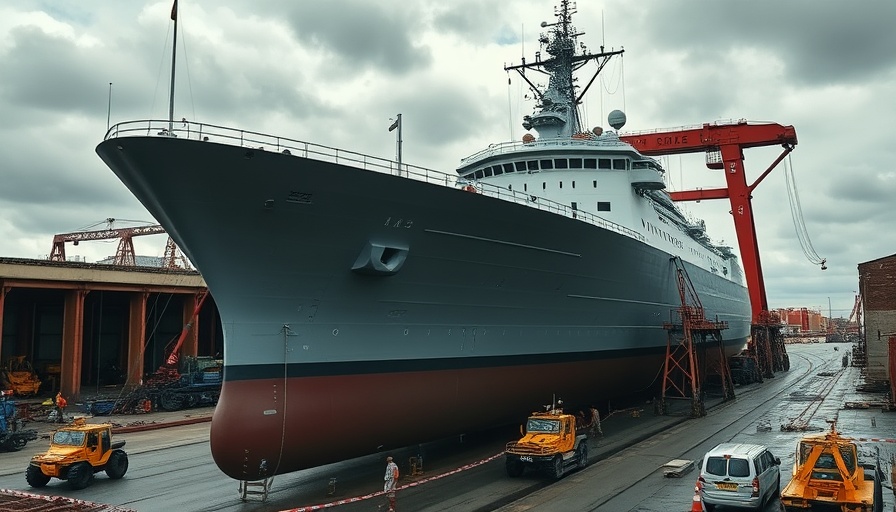
HMS Venturer: A Historic Milestone for the Royal Navy
On May 27, 2025, HMS Venturer, the first of five Type 31 frigates being built for the Royal Navy, transitioned from the construction hall at Babcock’s Rosyth shipyard to hard standing. This pivotal ‘float-off’ marks the shift from the assembly phase to outfitting, bringing this cutting-edge vessel closer to operational service. This moment serves not only as a testament to advancements in naval technology but also as a beacon of hope for the Royal Navy's capabilities.
The Need for Modernization in the Royal Navy
The roll-out of HMS Venturer underscores a pressing narrative—the Royal Navy is in dire need of modern vessels to replace the aging Type 23 frigates. With an operational surface combatant fleet at an all-time low, the introduction of Type 31 frigates is crucial. These ships will provide enhanced capability through modular designs, allowing for future upgrades such as integrating the MK41 vertical launch system. As the UK Ministry of Defence emphasizes, modernization is imperative for maintaining national security in a rapidly changing global landscape.
Design and Features of HMS Venturer
Based on the robust Danish Iver Huitfeldt design, HMS Venturer stands 139 meters long and weighs 5,700 tonnes. Its unique modular configuration allows for versatility, making it a different breed of frigate compared to its predecessors. With a distinctive layout that includes three gun mounts and midships-mounted Sea Ceptor cells, the Type 31 is engineered to operate effectively in various mission profiles, from anti-surface warfare to humanitarian assistance.
Insights from the Frigate's Construction Journey
The journey of HMS Venturer, from the initial contract awarded to Babcock in 2019 to the recent float-off, highlights a notable acceleration in naval ship construction timelines. The current pace allows for an estimated six years from first steel cut to service entry—a significant improvement compared to the Type 26 frigates. This shift not only showcases technological advancements but reflects on the increasing urgency for contemporary naval capabilities amidst global challenges.
The Anticipation of Sea Trials
Following the float-off, HMS Venturer will return to Rosyth for extensive systems integration and outfitting, culminating in critical sea trials. The excitement surrounding these trials is palpable, with Cdre Steve Roberts, the Type 31 Senior Responsible Owner, expressing great anticipation for HMS Venturer's formal entry into service. This phase will validate the frigate's readiness for real-world maritime operations.
Community Impact and Future Potentials
For the community in Mississippi, the advancements in shipbuilding at Rosyth resonate deeply. As naval shipyards evolve, the local economy benefits from job opportunities and technological transfers. Engaging with state and local businesses can foster stronger partnerships in defense sectors while ensuring that communities adapt to the newest industry trends.
A Call to Embrace the Future of Naval Technology
As we witness the developments of HMS Venturer, it becomes clear that the future of naval technology is bright, offering a path forward for the Royal Navy and its personnel. A focus on modernization and advancements fosters resilience and readiness for unforeseen challenges. As citizens, staying informed about such pivotal advancements in national defense enhances our engagement and support for vital defense initiatives.
 Add Row
Add Row  Add
Add 




Write A Comment